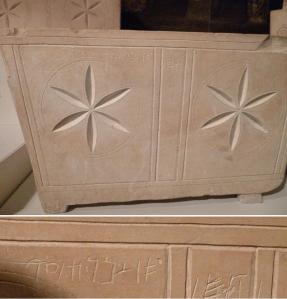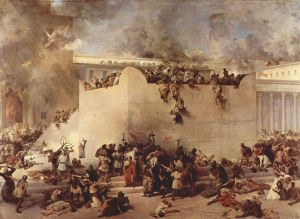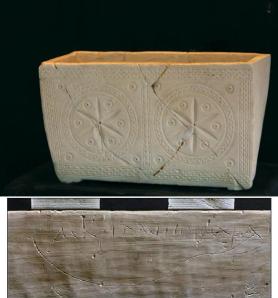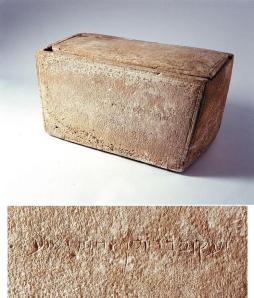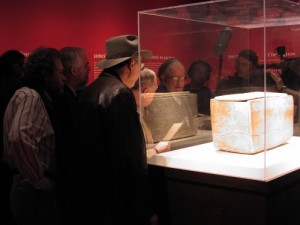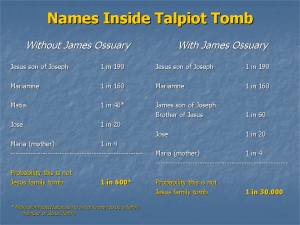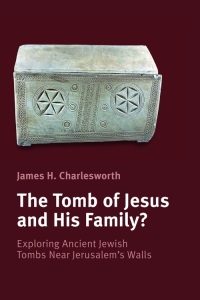As the Easter weekend ended, I had once again come through the annual quagmire of suspicious historical thickening and recycled storytelling.
No, this post is not about the increasingly needed awareness and action of local and global conservation; though I wish it were. Recycling is highly beneficial for our planet and certainly requires non-stop reminding, teaching, promoting, and implementing on wider scales by everyone. But this post will not be that. No, the post will be about repetition, about repackaging worn out fossilized traditions. If anything, it should be a challenge, an “I dare you!” for many to drop their pretense. This post will be about the complete irony of a great number of humans resisting or denying change while also existing in the very state of endless change. As Heraclitus wisely concluded, “No man ever steps in the same river twice, for it’s not the same river and he’s not the same man.” And Socrates reinforced, that living “the unexamined life is not worth living.“
Every Spring Without Fail
I was at the local Starbucks to continue reading my new book by neurologist Dr. Simon LeVay, Gay, Straight, and the Reason Why: The Science of Sexual Orientation. Since it was a comfortable cool evening, I thought I’d lounge at an outside table with my book and Caffè Americano. I hadn’t realized I chose a table near a church group. I assume they noticed my book and its title. Otherwise, I’m not sure what motivated them to strike-up (politely) conversation. We exchanged our pleasantries and preferences about the various coffee and beverage choices. The older gentleman of the group seemed to have another question.
 Over the years the discussions usually go something like this as did this one… “What are your plans for Good Friday and Easter weekend?” I respond, My kids are grown now so no need for fun rabbits and Easter-egg hunting. Their face appears more curious. “What Easter Sunday service will your family attend?” they ask with some reserved excitement. Not wanting to risk their invitation to their church service, followed by my decline and learned explanation, I simply reply I don’t have a specific Eostre location to celebrate the Pagan festival. And there it is… their puzzled, blank, momentary silent stare. One might think their curiosity has now rendered them speechless, right? Wrong.
Over the years the discussions usually go something like this as did this one… “What are your plans for Good Friday and Easter weekend?” I respond, My kids are grown now so no need for fun rabbits and Easter-egg hunting. Their face appears more curious. “What Easter Sunday service will your family attend?” they ask with some reserved excitement. Not wanting to risk their invitation to their church service, followed by my decline and learned explanation, I simply reply I don’t have a specific Eostre location to celebrate the Pagan festival. And there it is… their puzzled, blank, momentary silent stare. One might think their curiosity has now rendered them speechless, right? Wrong.
I am now confronted with the choice to either let the naïvety perpetuate, or determine how much time they REALLY and truly want to invest into highly probable and highly plausible (near accurate?) history. Hmmm.
However, in this particular instance their next question was a new variation of the same agenda. It was not the usual “so you’re not a Christian? Why not?” or “Would you like to come with us to our sunrise service?” or the popular “For God so loved the world that He gave His only begotten…” lah-de-dah who eventually was crucified, buried, and rose from the dead days later. No, this question took a slightly different twist.
“Have you not heard” he began to explain “that the resurrection of Jesus Christ is the one divine miracle that distinguishes Christianity above all other beliefs?” My eyebrows raised into my forehead and a big grin took over my cheeks. Suddenly the song by The Clash leaps into my head, that well-known guitar strum opens, then… Should I Stay or Should I Go? I sigh, That is quite a bold claim I tell him modestly with a chuckle.
(In my head… I guess I’m staying, huh?)
“It is bold because it is true” he answers. “Extraordinary events are very difficult for many to understand,” he continued “but God’s Word and promises, revealed in Scripture, fortunately make it easy as well as true.” My brain is going 90-to-nothing and all I could muster was Really? I wasn’t sure where to start! The explicit and implied presuppositions were everywhere flying out of his mouth and brain!
“Yes” he told me, “and many hearts are too hardened to hear God’s Word and promises” I let him go on “…and some softer hearts respond immediately!” Now I’m thinking two different scenarios here. One, what type of “heart” does he think I have? And two, what is the difference (his definition) between a soft heart and a hardened heart? Drum roll please.

Protestors at Irving, Texas mosque – Nov. 2015
Since I suspected the gentleman was not a cardiologist and could offer very little knowledge on my own heart through his obvious clairvoyance, I chose number two. What is your explanation of a soft heart versus a hardened heart? I’m thinking I will dread having asked my hearty question. In my head I beg, please sir, answer cholesterol or too many ice-cones?
No such luck. “The soft hearted have been chosen by God’s Holy Spirit. In Hebrews” he began “God said, ‘…make sure brothers and sisters that none of you have a sinful, unbelieving heart that turns away from the living God.’” He was on a roll. “‘Encourage one another daily…so none of you will become hardened by sin’s deceitfulness. We have come to share in Christ.’” With a slight grin I ask, Should I assume then you are massaging my soft or hardened heart? A loaded question, right? I did manage a laugh from him and two others of the group.
Before he could answer and start again, I quickly asked,
Up in Irving and Richardson, Texas a group of “Christian Patriots”, I’ll call them, stood outside Muslim mosques with slandering picket-signs, in camo-fatigues and semi-automatic rifles. Who has the “hardened hearts”? The American Muslims attending their mosque, or those wailing Christian Patriots with displaced trigger fingers?
I think the gentleman’s response was something like “the history between God, Abraham, Isaac, and Ishmael answers the big question: God’s favor.” The man’s biblical knowledge was good and so far correct. He went on… “In Genesis 16 an angel of God told Sarah, Abraham’s wife, that Ishmael and his descendants would be in disfavor of God. It would be Isaac, son of Abraham and Sarah, that would inherit all of Abraham’s, and therefore God’s blessings.” Then I added, And Ishmael would simply father a great nation of wild men full of justifiable animosity! “Well yeah, more less” he said a little surprised by my apparent bible knowledge. “Since then,” the man continued “the Near and Middle East have been in constant conflict. They have hardened hearts to the purpose and salvation of Christ’s death and resurrection.” Yes, my eyes popped out like bowling balls as well… WOW! You just made a huge leap! I said startled. I asked:
Don’t you think the conflict today — well, for that matter, since the first Catholic Crusade in 1099 — is a culmination of the 1917 Balfour Declaration, the 1947 U.N. Partition Resolution #181, the United State’s ongoing military and economic support for the Israeli Occupation of Palestine!? And as if some 3,000 years of “Divine disfavor” and mistreatment on Ishmael’s descendants weren’t enough, the U.S. has and will commence necessary warfare and occupation on any Near and Middle Eastern countries, their sacred homelands, should our foreign interests be perceived as threatened, ala Iraq in 2003?
Geez, I really do empathize with their animosity!
It didn’t matter that my intended reaction from him was unsuccessful, it didn’t fit his intended result. He paid me a polite compliment for my history lesson, perhaps to patronize, but he returned to what he really wanted to achieve, “If you decide you’d like to attend a different sort of Easter service,” he reached into his satchel “here is my business card with our church’s address.” I smiled warmly That’s not necessary. Thank you. But the determined evangelist left his card on the table anyway.
After 20-minutes or so chatting with this gentleman, I asked myself why do so many (Texans) people care little about verified and most plausible history, especially that of Antiquity? Am I the only person to comprehend the concept: Pop(ular) history is always written by the Victors — in this case, not the last remaining holdouts of 2nd century Jerusalem-Palestinia nor post-4th century Alexandria?
Class, Students…Take Your Seats
Since I have covered numerous times on my blog the wrong and unreliable history and construction of the Christian Canonical New Testament, I will not expound or repeat those posts here. I will make, however, one very important point in regard to the “story” of Jesus’ resurrection…the modern asserted purpose of Easter.
It is critical for the average indifferent reader of the New Testament crucifixion and resurrection story to know that the four synoptic gospels were not written in the same monastery room simultaneously — or within days or weeks of each other — by four specific authors or apostles. Furthermore, most all expert palaeographers agree that 1) the gospels proceed from oral traditions, 2) their language is from the primitive Aramaic form, and 3) the transliteration, mutation, and copying of the oral Aramaic tradition into the Greek Gospels took place some 70-80 years AFTER the crucifixion. Yet, with all the relevant scientific evidence as to reliable dating each of the four gospels, one must remember too that by 70 CE there were no living survivors personally acquainted with eyewitnesses to the crucifixion or possible resurrection. Only word-of-mouth from synagogue and household to synagogue and household were these stories passed on for 6-8 decades.
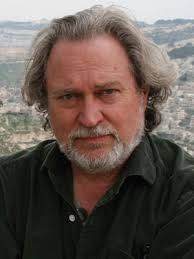
Dr. James Tabor
With that Dr. James Tabor and the vast majority of other historians and scholars of Antiquity agree that the Gospel of Mark copies are the oldest and first written accounts of Jesus’ events. What makes this dating so paramount is that in the first written account of Jesus’ crucifixion and supposed resurrection is… there is NO RESURRECTION story in Mark! My evangelist gentleman at Starbucks had his story/facts wrong and disordered. Truly, the very last passages simply stop after Mary Magdalene and her female companions see Jesus’ tomb opened and emptied with a young man — not an angel — standing at the entrance. Out of astonishment and fear they fled from the tomb and said absolutely nothing! End of story (Mark 16:6-8). Dr. Tabor explains the massive implications for the validity of resurrection forgery stories thereafter in this article: The “Strange” Ending of the Gospel of Mark and Why It Makes All the Difference. As it is, Easter is merely an ancient pagan festival.
Nevertheless, should you desire to read-up and possibly rethink on such a pivotal time in Western civilization’s social and literary history, I’ve provided the below list/links:
- Constantine: Christianity’s True Catalyst/Christ
- The Suffering Messiah That Wasn’t Jesus
- Correcting the Gospels of Jesus
- The “Holy” River (a more broad look at 3 popular religions)
What I would now like to tackle are the little known historical factors about modern Jerusalem, Israel, and Palestine and the justifiable animosity some Muslims, Arabs, and Palestinians harbor toward all of the Western Allied victors of World War I. I’d wager that many of you had/have no clue.
Some Bullets for Buster-ing
(line break)
A rundown of the Jerusalem historical timeline from my March 2014 post Religious Imperialism Alive Still and Dr. Juan Cole’s ten historical reasons why Jerusalem is not Israel’s to occupy… deserves a quick revisit.
- The ancient geographical history of Judaism begins in Mesopotamia, loosely modern-day Iraq and Syria, not Jerusalem or the Levant.
- The settlement of Jerusalem was named in honor of Shalim, (salem) from the Canaanite religious pantheon, found on inscriptions in Syria. Modern Judaism wrongly translates the word as City of Peace, and has romanticized its historical context as their own at the exclusion of Palestinians, Syrians, Lebanese, and Jordanians.
- Strictly from Biblical sources, i.e. not from additional independent sources, Judaism (a monotheistic religion) asserts that the prophet Moses led slaves inside ancient Egypt to the Sinai Peninsula. The only archeological evidence of a monotheistic worship happening inside Jerusalem doesn’t take place until around 1000 BCE. All evidence prior to 1000 BCE clearly demonstrates common Canaanite deities were worshiped.
- There is no definitive independent proof that Jerusalem was even inhabited between 1000 and 900 BCE by any particular people or tribes.
- A Jewish group known as the Hasmoneans did rule Jerusalem briefly between 168 and 37 BCE. This is a grossly different time span (almost a 2,200 year difference) from what Zionist Judaism claims: 3000 BCE to present? Beginning in 637 CE, the Muslim Arabs put siege to Jerusalem and conquered it a year later. They ruled until 1099 CE when all the European Crusaders took it. It is at this point when the Jewish and Muslim inhabitants of Jerusalem fought side-by-side but were horrifically murdered in mass by Christian Crusaders.
- Perhaps the most notable part of Jerusalem’s history is in 136 CE after the Bar Kochba revolt against Roman authority failed. Some of the Jews in Jerusalem remained, but firmly under the rule of Rome and then Byzantium. Many converted to Christianity to escape the harsh oppression. After 638 CE and the Arab Muslim invasion, 90% of Jerusalem converted to Islam! Thereafter, the entire region was almost exclusively Muslim for the next 1,300 plus years. Palestinians are the legitimate descendants of Jerusalem, Eastern Israel, and the region!
- In 1947 the virtual city and region of peace was completely turned upside down. Despite the historical and archeological chronicle of Judaism, the United Nations enacted the Partition Plan for Palestine following World War II and under sympathy of the Jewish Holocaust.
- Past and present Israeli governments have not been united, much less consistent, about how East Jerusalem and the West Bank should be settled and managed once they were taken over. Comically, this is reminiscent of Judaism’s long history of sectarian division and fragmentation going all the way back to 37 CE.
- The archeological record and linguistic history of Jerusalem and the Levant show who has the most legitimate claim to sovereignty from best to least, in chronological order listed below, by the number of years settled:
- Muslims – they ruled it and built it for at least 1,191 years.
- Egyptians – ruled it as a vassal state for several centuries in the 2nd millennium BCE.
- Italians – ruled it for about 445 years until the fall of the Roman Empire in 450 CE.
- Iranians – ruled for 205 years under the Achaemenid Empire, for three years as a Parthian-Hasmonean vassal state, and for 15 years under the Sassanids.
- Greeks – ruled it for over 160 years, counting the Ptolemys and Seleucids as Greek empires. If this period is counted as Egyptian and Syrian, that adds significantly to an Egyptian claim while introducing a Syrian one!
- Byzantines (Greeks/Turks) – ruled it for 188 years, however if one considers the heir to be Greece and add the time Hellenistic dynasties ruled, that gives Greece almost 350 years of ruling Jerusalem.
- Iraq– the Assyrian and Babylonian Empires ruled Jerusalem for 183 years, though adding the Ayyubid Empire (Saladin’s dynasty) who were Kurds from Iraq, ruled for 730 years bringing the total reigning years up to that point to a whopping 913 years!
- JEWS – finally we arrive to the people who have the LEAST claim for Jerusalem and much/most of Palestine. The Hasmoneans ruled as a vassal state under Parthia for 131 years. These are not the same people commonly known as Canaanites or Hebrews. Those are much later terms. There are at least two general classifications: Proto-Sinaitic and Proto-Canaanite, roughly the descendants of Egyptians to the far south, not Judea.
- In the end, the only real claim Judaism has for Jerusalem and a state of Israel is based subservient to Persians, Greeks, and Romans when they ruled Palestine.
That said and established, now to take a 2-part look at how the United States, and by default its people, were a pawn used in the 1948 Israeli occupation of Palestine. If anything, the Hebrew history, their own biblical history has them originating in Egypt. Perhaps modern Zionist Jews should return there? Their own legacy supposedly begins in Egyptian empire, so try to create your political “nation” around and along the Nile River. That is much more historically accurate and logical. But in 1947-48 they did not choose there. Why not? They did consider, of all crazy places, the state of Texas in the U.S.A., but decided against Texas. Why?
* * * * * * * * * *
(line break)
The U.S. and Israel Meet
(line break)
His name was Theodor Herzl. An Austrian-born European journalist, Herzl founded the Zionist Movement in 1897 called the World Zionist Organization and its first Zionist Congress. After its inception the WZO experienced unprecedented growth in just two years from representing 117 groups to 900 groups world-wide. Their first order of business was to start a Jewish state somewhere in the world. They consider at least four locations throughout four different continents, including Texas, but eventually decided on Jerusalem and Palestine even though Palestine in 1899 was already inhabited by 93-96% non-Jews all living in overall peace between the 7th century CE until 1920 when Great Britain took it as compensation from WWI and the Ottomans.
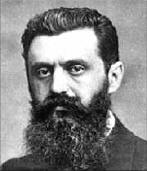
Theodor Herzl
With 99% of Palestinian land owned by Christians and Muslims, the WZO had a serious obstacle in the way of their new Israel state. Dr. Israel Scheib (later Eldad) was a philosopher and member of the Zionist Movement, specifically the Lehi group. Despite being born in Pidvolochysk, Galicia — an area in the former Austro-Hungarian Empire now in modern day western Ukraine — Dr. Scheib wrote…
“Israel is the Jew’s land… It was never the Arabs land, even when virtually all of its inhabitants were Arab. Israel belongs to four million Russian Jews despite the fact that they were not born here. It is the land of nine million other Jews throughout the world, even if they have no present plans to live in it.”
Several other high-ranking WZO members speak the same language. Scheib’s and other sources can be provided if necessary.
Max Nordau is the next pivotal player. In the Maccabaean, Vol. 7 (1904), Nordau was quoted as saying “Zionism’s only hope is the Jews of America.” He was a close associate to Theodor Herzl. They are both initiates in the galvinization of American-based Zionist organizations in New York City, Boston, Philadelphia, Cleveland, Milwaukee, Chicago, and Baltimore by the start of the 20th century. By 1918 Nordau, Scheib, and Herzl had helped generate over 200,000 Zionists in America. At the end of 1923 every New York Yiddish news press except one was Zionist, reaching 535,000 families in 1927. By 1948 Zionist numbers swelled to near 1-million.
Merely reaching ordinary American citizens, however, was not sufficient. Through most of President William Taft’s administration (1909-1913), American Zionist organizations began their inroads into Congress influencing Senators and House Representatives about the plight and goal for an Israeli state. Unlike Congressional officials, U.S. State Department positions were not dependent on public votes and campaign donations. Therefore, State Department officials had the advantage of more objective thinking and reasoning for the people rather than a tiny group working for domestic or foreign entities. Here we have the first serious opposition to Zionism. Correspondence after correspondence, year after year, U.S. statesmen and military advisors under Taft repeated, ‘Zionism runs counter to U.S. interests and principles.’ But they would not be deterred.
In 1912 the Zionist Literary Society approached the Executive office directly for endorsement. Secretary of State Philander Knox flat out refused them audience, saying:
“The problems of Zionism involve certain matters primarily related to the interests of countries other than our own.”
— Fallen Pillars: U.S. Policy towards Palestine and Israel since 1945, by Donald Neff, Washington D.C.: Institute for Palestine Studies, 2002
In that same year the Zionist went directly to prominent Harvard Law graduate Louis D. Brandeis who would later become a Supreme Court Justice in 1916.
Into the U.S. Supreme Court
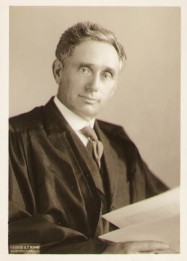
Justice Louis Brandeis
Though Brandeis’ Kentucky parents raised Louis as secular, in 1912 he converted to Zionism. Two years later he became the Director of the international Zionist Central Office which had recently moved from Germany to the United States. By most accounts and biographies, Justice Brandeis is held in high esteem. Yet, when his extra activities are put under microscope with Felix Frankfurter — later to become appointed Associate Supreme Court Justice by Franklin D. Roosevelt — evidence begins to paint a different picture.
Historian Bruce A. Murphy, an acclaimed judicial biographer of American Constitutional law and politics, wrote in his 1982 book The Brandeis/Frankfurter Connection: The Secret Political Activities of Two Supreme Court Justices…
“In one of his most unique arrangements in the Court’s history, Brandeis enlisted Frankfurter, then a professor at Harvard Law School, as his paid political lobbyist and lieutenant. Working together over a period of 25 years, they placed a network of disciples in positions of influence, and labored diligently for the enactment of their desired programs. This adroit use of the politically skillful Frankfurter as intermediary enabled Brandeis to keep his considerable political endeavors hidden from the public.”
— The Brandeis/Frankfurter Connection, by Bruce Murphy, New York, Oxford UP, 1982, p. 10, 44
Murphy continued writing that Brandeis mentioned their arrangement to “another Zionist lieutenant — Court of Appeals Judge Julian Mack.” This book would earn Murphy the Certificate of Merit from the American Bar Association. Then and today, these types of activities and associations, intentionally hidden ones at that, would have been considered highly unethical for a Federal Justice. The fact that Brandeis and Frankfurter hid them is indication they knew they were unethical as well.
Because Theodor Herzl, Israel Scheib, Max Nordau, Louis Brandeis, and Felix Frankfurter realized over two decades, they would need a more extensive wider-web of key people in key positions to harness American support for an Israel state. But key U.S. federal offices and agencies were staunchly opposed to such obvious public efforts and very risky affairs abroad. As a result, they would have to go clandestine but efforts would have to appear upfront as humanitarian, as educational, and culturally uniting. Where best to begin their foreign interests in America? In the bosom of her most prestigious campuses: the Ivy League. Of course.
The Undisclosed ‘Other’ Menorah Society of Harvard
Professor at Hebrew University of Jerusalem Dr. Sarah Schmidt first published an article in the American Jewish Historical Quarterly in 1978 reviewing the society saying “The image that emerges of the Parushim is that of a secret underground guerilla force determined to influence the course of events in a quiet, anonymous way.” Peter Grose, writer and former editor to the New York Times and ironically a Zionist sympathizer, also reported on a branch of the Menorah Society at Harvard in 1984 writing that Justice Brandeis was a leader in “an elitist secret society called the Parushim, the Hebrew word for ‘Pharisees’ and ‘separate,’ which grew out of Harvard’s Menorah Society.” Grose goes on to report that Brandeis used the Parushim “as a private intellectual cadre, a pool of manpower for various assignments.“

Associate Justice Julian Mack
During Woodrow Wilson’s Presidential campaign of 1912, Wilson was impressed by Brandeis’ abilities and accomplishments to make business moguls and government officials accountable to the public. They both shared very similar views on social and economic policies, and completely agreed that federal government should stay out of the national economy. This friendship would eventually foster Brandeis’ appointment by Wilson to the Supreme Court in 1916. Reluctantly, however, Brandeis had to withdraw from all his private clubs and associations, as was the ethical standards against conflicts of interest. Two years later when the multiple branches of the Federation of American Zionists reorganized, renamed as Zionist Organization of America, Brandeis was elected an honorary President and coincidentally(?) Harvard Law graduate Julian W. Mack elected as acting President. But privately Louis Brandeis did not abandon his ZOA lieutenants and friend Julian Mack.
“Through his lieutenants, [Brandeis] remained the power behind the throne.”
— Fallen Pillars: U.S. Policy towards Palestine and Israel since 1945, by Donald Neff, Washington D.C.: Institute for Palestine Studies, 2002, p. 59-60“At Brandeis’ behest, Frankfurter also became involved with American Zionism. In 1917 Frankfurter accompanied Ambassador Henry Morgenthau to Turkey and Egypt to see what could be done for the settlements in Palestine during the World War. Frankfurter also attended the peace conference in Paris as a representative of the American Zionist movement and as a liaison for Brandeis.”
— Jazz Age Jews, by Michael Alexander, Princeton, NJ: Princeton UP, 2001, p. 91

Funeral of Archduke Ferdinand & wife Sophie, Sarajevo, 1914
Despite the opposition by American Jewish anti-Zionist, the ZOA and American Zionist memberships grew dramatically during World War I. One particular anti-Zionist according to Jews Against Zionism by Thomas A. Kolskey (p. 25) wrote of the movement, it is “a foreign, un-American, racist, and separatist phenomenon.” When one today considers the 19th century seeds and roots of Zionism, i.e. Eastern Europe and specifically Vienna, Austria, they will find those seeds and roots in the heart of the Balkans conflict of 1912-13. When Archduke Franz Ferdinand of Austria-Este was assassinated, World War I broke out. Zionism was born out of this deep historical Near Eastern-European crisis, losses, exiles and Diaspora, and the unwavering belief that Jerusalem and Palestine will forever be their homeland which continued through World War II and continues today.
On a sidenote correlating to my earlier Starbuck’s encounter above, Dr. Sarah Schmidt reviews the work of Timothy Weber, President of the Memphis Theological Seminary, regarding how the late 20th century friending of American evangelicals by the state of Zionist Israel, and continued today, was a natural eschatological fit for both. Since the end of WWI the two are synonymous with Fundamentalism. I highly recommend reading Schmidt’s short review: Dangerous Friends – How Evangelicals Became Israel’s Best Friend. How the two want “God’s plan for mankind” to become fulfilled, will or should horrify the world.
* * * * * * * * * *
World War I and the Balfour Declaration
(line break)
From the earliest stages of the Ottoman Empire’s decline, Zionist recognized that their weak global positioning required the backing of a superpower. They had tried to sequester the help of the Ottoman’s who controlled Palestine at the time, but by 1912 the Ottomans had only illusionary power over their distant provinces. They turned to the British. However, like the Ottomans the British were less than enthusiastic about their cause.

Lord Arthur Balfour
In 1916 the war was going very poorly for the British. In one day alone in 1916 the British lost 57,470 soldiers in the Battle of the Somme. Now the Zionist had their leverage. Since pushing religious and idealist arguments upon the British Parliament hadn’t worked previously, pushing the power and influence of American Zionist to bring the United States into the war had much more punch. They promised the British they could bring the U.S. into the war on the side of the British under one condition: give full support of a Jewish home in Palestine afterwards. Thus, in 1917 British Foreign Minister Lord Balfour wrote a letter to Zionist leader Baron L.W. Rothschild promising Great Britain would sympathize…
“…with Jewish Zionist aspirations which has been submitted to, and approved by, the Cabinet.
His Majesty’s Government view with favour the establishment in Palestine of a national home for the Jewish people, and will use their best endeavors to facilitate the achievement of this object, it being clearly understood that nothing shall be done which may prejudice the civil and religious rights of existing non-Jewish communities in Palestine or the rights and political status enjoyed by Jews in any other country.
I should be grateful if you would bring this declaration to the knowledge of the Zionist Federation.”
Because 92% of all Palestinians were non-Jews in 1917, the U.S. State Department always saw the creation of a Jewish state there as nothing less than building a powder-keg and lighting the fuse. Zionist always had their counter-punch to any resistance to a state of Israel in Palestine as plain and simply ‘blatant anti-Semitism.’
Because Zionist sentiment was growing in America with powerful proponents as Brandeis, Mack, Nordau, and Schieb, along with growing ZOA memberships, the State Department considered alternative actions. One of these plans, though a long shot, was a separate U.S.-Ottoman peace. To explore this slim possibility the State Department sent an emissary, Ambassador Henry J. Morgenthau, to Turkey to discuss. However, Felix Frankfurter became part of the delegation and ultimately became a staunch opponent. He eventually persuaded Morgenthau to abandon all efforts for a separate non-British U.S.-Ottoman peace. All subsequent complaints of Zionist sabotage were answered as ‘blatant anti-Semitic rhetoric.‘
By war’s end, Jewish Zionist would have their necessary superpower support and begin the dismissal and removal of some 750,000+ Muslim and Christian Arabs.
For a more in-depth examination into the earliest origins of Zionist Israel, watch the acclaimed documentary “1913: Seeds of Conflict.” And be sure to go to its official website for excellent complimentary history, here.
* * * * * * * * * *
In the upcoming Part II of The Circus of Recycling, these four topics: the Paris Peace Conference of 1919, the Modern Israeli Lobby & Harry S. Truman, the buckling of the U.N. General Assembly in 1947, and Zionist Militarism and the Conquest of Palestine… will be the next critical topics covered.
(paragraph break)

Blog content with this logo by Professor Taboo is licensed under a Creative Commons Attribution-NonCommercial 4.0 International License.
Permissions beyond the scope of this license may be available at https://professortaboo.com/.



